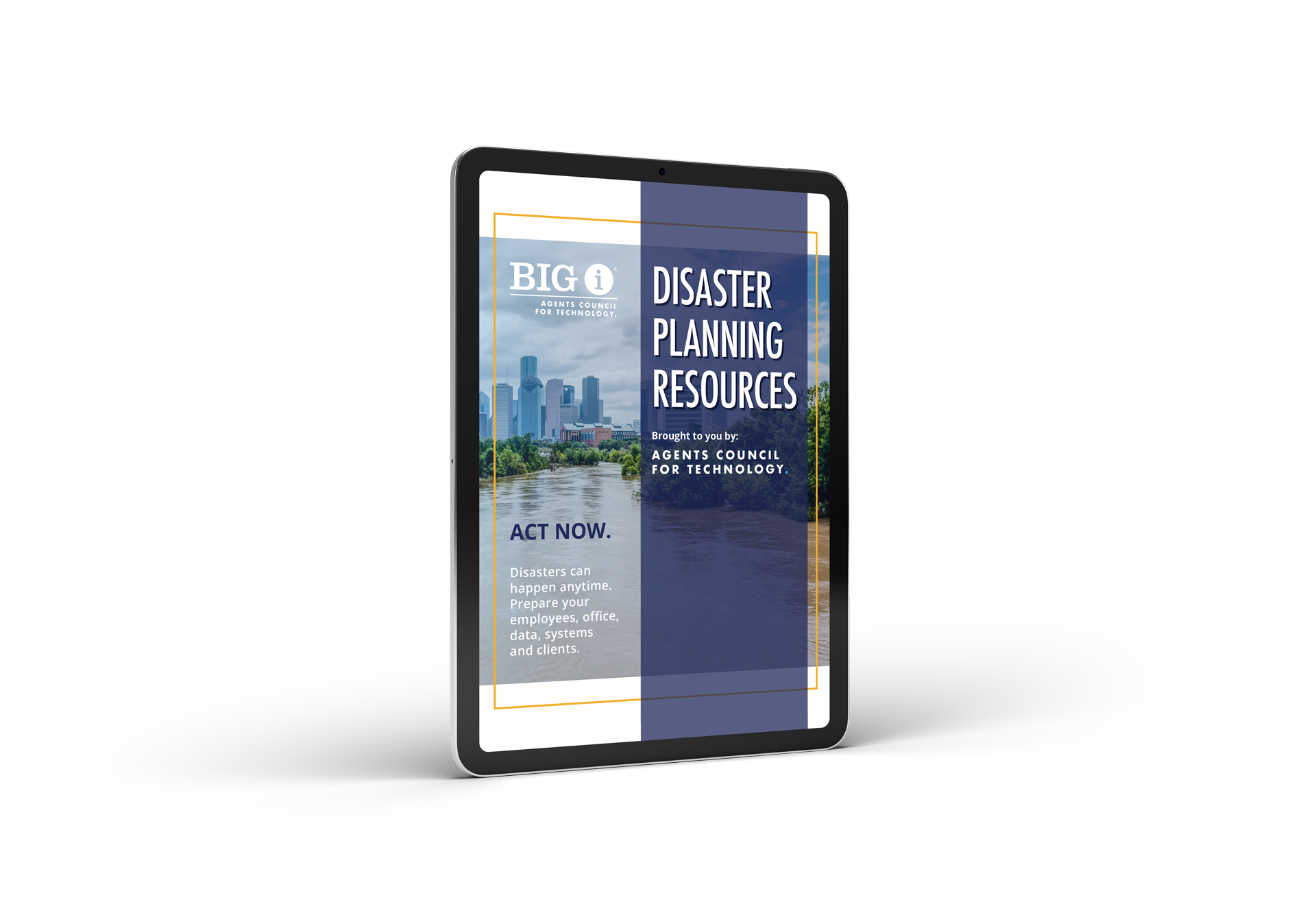
Powered by AGents Council for Technology
Disaster Planning guide.
Updated September 2024 for 2025 Distribution.
Disaster Planning Guide.
Disasters, whether natural or otherwise, can strike at any time and without notice. The best line of defense is offense—prepare your employees, physical office, data, systems, and clients with procedures to implement when disaster strikes. Be prepared to serve your clients without power, phone, Internet, or even a physical office location.
Enhance disaster preparedness for your small business by implementing remote work capabilities, utilizing cloud-based systems, and ensuring diverse, resilient infrastructure to maintain your operations and provide support to your clients during physical disruptions.
Download Disaster Planning Guide!

What’s Inside the Guide?
What to do before
Printable Risk Assessment Form
Prepare Employees
Prepare the Office
Prepare Technology Systems
Prepare with Carriers
Prepare to Communicate
Sample Disaster Plans and Resources
Prepare Employees
Prepare the Office
Prepare Technology Systems
Prepare with Carriers
Prepare to Communicate
Sample Disaster Plans and Resources
What to do during
Your Safety is the FIRST Priority
When it is Safe…
When it is Safe…
What to do after
Access the Office
Service Clients
Post Event Debrief
Service Clients
Post Event Debrief





